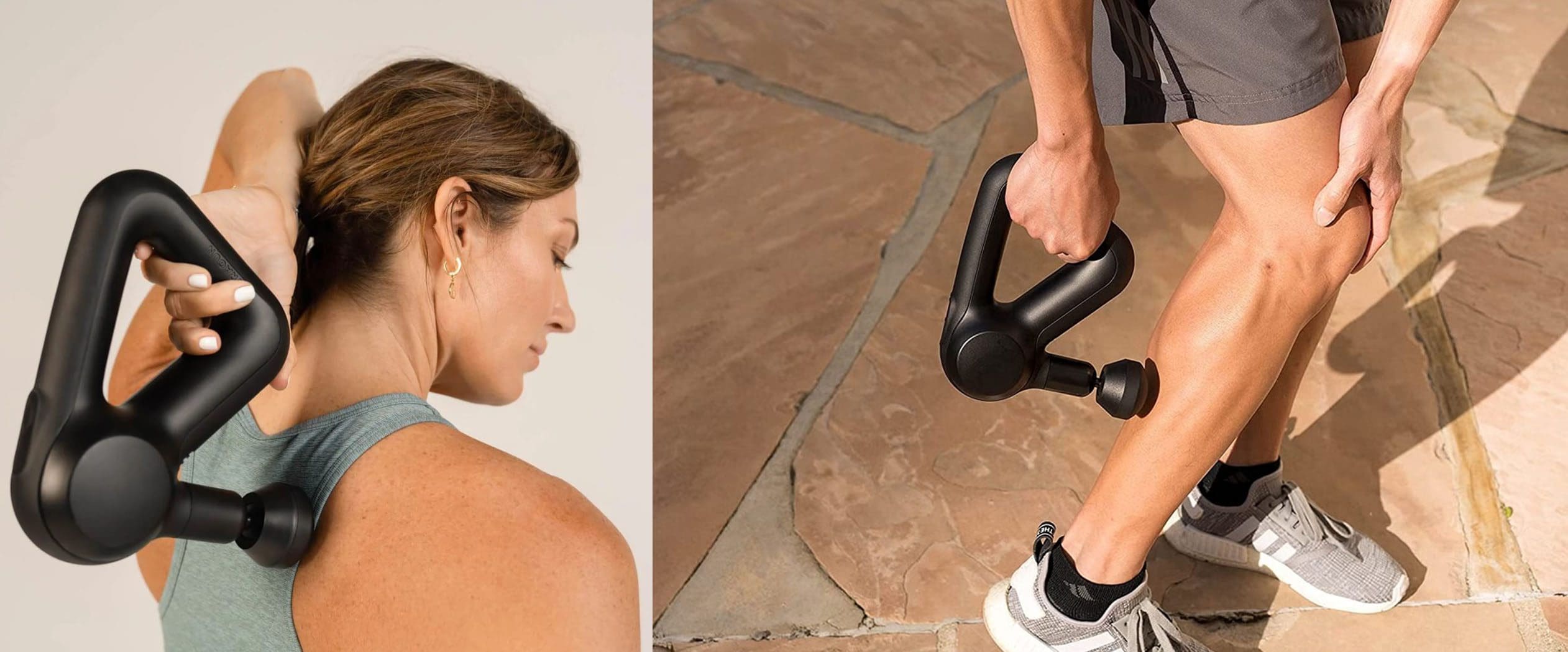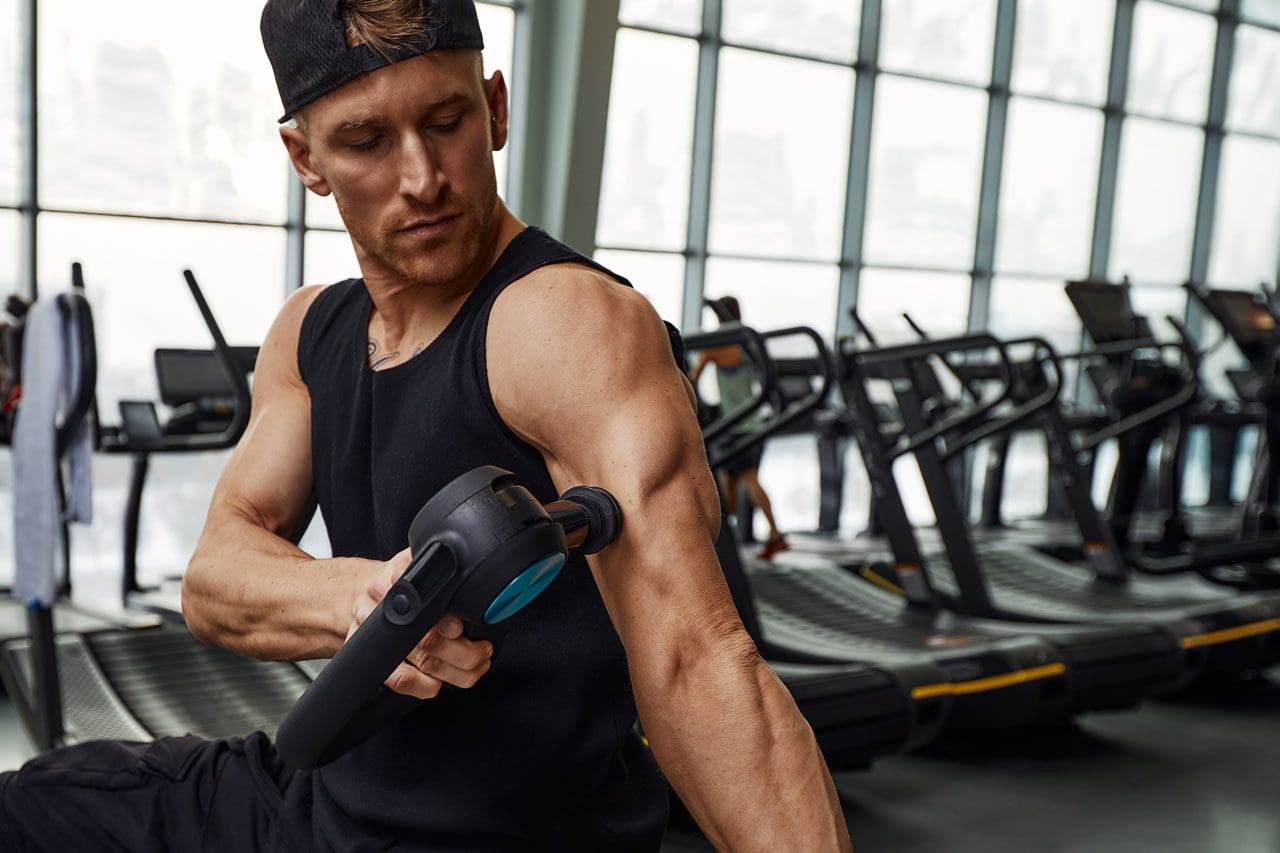Using A Percussive Massager Correctly: Wellness Doctor Rx
Percussive massage guns have become a standard tool in osteopathy, physical and massage therapy, and chiropractic care. They provide rapid bursts of force into muscle tissues to quickly loosen and relax the muscles to alleviate soreness, stiffness and increase circulation. Percussive massager therapy devices can be a healthy part of an exercise and recovery routine. They allow individuals to give themselves quick, powerful massages anytime and anywhere. But they need to be used correctly to reap the benefits.

Table of Contents
Percussive Massager
These devices can be found in stores and online. Many are on the market, making it tough to separate high-quality massagers from low-quality ones. With a little research and advice from a physical therapist or chiropractic professional, they can help the individual get the right one and training on how to use them to maintain a healthy musculoskeletal system.
Percussive Therapy
Massage guns utilize percussive therapy or vibration therapy, sometimes simultaneously. Percussion and vibration therapy are slightly different. They are soft tissue manipulation, which reduces muscle soreness and post-physical activity, and workout fatigue.
- Vibration therapy uses vibration movements to relax the body, alleviate stress and improve circulation.
- Vibration therapy applies force to targeted areas but with less intensity.
- This type of soft tissue therapy is generally defined as reaching eight to 10 millimeters into the soft tissues.
- Vibration therapy is often recommended for individuals with chronic pain conditions, overly sensitive muscles, or a medical condition that prevents them from using percussive therapy.
- Percussive therapy involves the application of force to muscles and fascia to break up adhesions and increase circulation to sore and sensitive areas.
- Percussive therapy extends deeper into the muscles and reaches deep into soft tissue, estimated to be about 60% deeper.
Using It Properly
It’s important to know how to use the machine to get the most out of a percussive massager. Using the massager incorrectly can lead to further injury or the development of new injuries.
Before Workouts
A pre-workout massage session can help warm up the body by increasing circulation and improving the range of motion of the muscles that will be engaged during the workout. Spend one to two minutes massaging each muscle group that will be worked out, plus 30 seconds on supporting muscle groups. For example, here is a pre-workout massage for a leg workout.
- Sixty seconds on each quadricep.
- Sixty seconds on each hamstring.
- Thirty seconds on the lower back.
- Thirty seconds on each calf.
Circulation increases in less than five minutes, and the muscles are ready for exercise. However, this does not replace proper warming-up like dynamic stretching and light cardio to increase heart rate.
After Workouts
After working out, a percussive massage can be part of the cool-down.
- Post-workout percussive therapy can help return the body from a heightened state to a resting state.
- Percussive therapy helps reduce inflammation, which helps reduce post-workout muscle soreness is thought to occur due to microscopic tears in muscle fibers and inflammation in the tissues.
- Percussive therapy maintains increased circulation after a workout, providing oxygen and nutrients to tired muscles.
- The massage helps relax the nervous system by reducing soreness and pain signals, similar to a TENS unit.
Sore Muscles
The muscles may still be sore a day or two after working out. This is called delayed-onset muscle soreness/DOMS.
- A percussive massage can help but may not completely alleviate DOMS but it will provide temporary relief.
- The massager’s speed and depth settings should be adjusted to where they don’t cause pain.
- Sore muscles tend to remain sensitive, and it is recommended to use the lower settings.
- Once a setting feels good, use the massager for one to two minutes on each sore area.
How Not to Use
Individuals are recommended to consult a doctor if not sure of percussive massage therapy and should avoid using a percussive massager on:
- Musculoskeletal injuries – sprains and strains.
- Bony areas.
- Areas of severe or unexplained pain.
- Sensitive areas.
- Bruises or open wounds.
- Individuals with arthritis, osteoporosis, fibromyalgia, or other musculoskeletal conditions.
Percussive massage devices are safe to use for muscle soreness and as a tool to improve fitness.
Individuals can safely use a percussive massager every day as long as they use proper techniques and don’t exceed the recommended usage time, usually provided with instructions on how long to use the device during a session. And some massagers have an automatic shut-off so the individual doesn’t exceed the recommended time.
Revitalize and Rebuild with Chiropractic
References
Cheatham, Scott W et al. “Mechanical Percussion Devices: A Survey of Practice Patterns Among Healthcare Professionals.” International journal of sports physical therapy vol. 16,3 766-777. 2 Jun. 2021, doi:10.26603/001c.23530
Dupuy, Olivier, et al. “An Evidence-Based Approach for Choosing Post-exercise Recovery Techniques to Reduce Markers of Muscle Damage, Soreness, Fatigue, and Inflammation: A Systematic Review With Meta-Analysis.” Frontiers in physiology vol. 9 403. 26 Apr. 2018, doi:10.3389/fphys.2018.00403
García-Sillero, Manuel et al. “Acute Effects of a Percussive Massage Treatment on Movement Velocity during Resistance Training.” International journal of environmental research and public health vol. 18,15 7726. 21 Jul. 2021, doi:10.3390/ijerph18157726
Hotfiel, Thilo, et al. “Advances in Delayed-Onset Muscle Soreness (DOMS): Part I: Pathogenesis and Diagnostics.” “Delayed Onset Muscle Soreness – Teil I: Pathogenese und Diagnostik.” Sportverletzung Sportschaden : Organ der Gesellschaft fur Orthopadisch-Traumatologische Sportmedizin vol. 32,4 (2018): 243-250. doi:10.1055/a-0753-1884
Imtiyaz, Shagufta, et al. “To Compare the Effect of Vibration Therapy and Massage in Prevention of Delayed Onset Muscle Soreness (DOMS).” Journal of Clinical and diagnostic research: JCDR vol. 8,1 (2014): 133-6. doi:10.7860/JCDR/2014/7294.3971
Konrad, Andreas, et al. “The Acute Effects of a Percussive Massage Treatment with a Hypervolt Device on Plantar Flexor Muscles’ Range of Motion and Performance.” Journal of sports science & Medicine vol. 19,4 690-694. 19 Nov. 2020
Post Disclaimer
Professional Scope of Practice *
The information herein on "Using A Percussive Massager Correctly: Wellness Doctor Rx" is not intended to replace a one-on-one relationship with a qualified health care professional or licensed physician and is not medical advice. We encourage you to make healthcare decisions based on your research and partnership with a qualified healthcare professional.
Blog Information & Scope Discussions
Welcome to El Paso's Wellness blog, where Dr. Alex Jimenez, DC, FNP-C, a board-certified Family Practice Nurse Practitioner (FNP-C) and Chiropractor (DC), presents insights on how our team is dedicated to holistic healing and personalized care. Our practice aligns with evidence-based treatment protocols inspired by integrative medicine principles, similar to those found on dralexjimenez.com, focusing on restoring health naturally for patients of all ages.
Our areas of chiropractic practice include Wellness & Nutrition, Chronic Pain, Personal Injury, Auto Accident Care, Work Injuries, Back Injury, Low Back Pain, Neck Pain, Migraine Headaches, Sports Injuries, Severe Sciatica, Scoliosis, Complex Herniated Discs, Fibromyalgia, Chronic Pain, Complex Injuries, Stress Management, Functional Medicine Treatments, and in-scope care protocols.
Our information scope is limited to chiropractic, musculoskeletal, physical medicine, wellness, contributing etiological viscerosomatic disturbances within clinical presentations, associated somato-visceral reflex clinical dynamics, subluxation complexes, sensitive health issues, and functional medicine articles, topics, and discussions.
We provide and present clinical collaboration with specialists from various disciplines. Each specialist is governed by their professional scope of practice and their jurisdiction of licensure. We use functional health & wellness protocols to treat and support care for the injuries or disorders of the musculoskeletal system.
Our videos, posts, topics, subjects, and insights cover clinical matters, issues, and topics that relate to and directly or indirectly support our clinical scope of practice.*
Our office has reasonably attempted to provide supportive citations and has identified the relevant research studies or studies supporting our posts. We provide copies of supporting research studies available to regulatory boards and the public upon request.
We understand that we cover matters that require an additional explanation of how they may assist in a particular care plan or treatment protocol; therefore, to discuss the subject matter above further, please feel free to ask Dr. Alex Jimenez, DC, APRN, FNP-BC, or contact us at 915-850-0900.
We are here to help you and your family.
Blessings
Dr. Alex Jimenez DC, MSACP, APRN, FNP-BC*, CCST, IFMCP, CFMP, ATN
email: coach@elpasofunctionalmedicine.com
Licensed as a Doctor of Chiropractic (DC) in Texas & New Mexico*
Texas DC License # TX5807
New Mexico DC License # NM-DC2182
Licensed as a Registered Nurse (RN*) in Texas & Multistate
Texas RN License # 1191402
ANCC FNP-BC: Board Certified Nurse Practitioner*
Compact Status: Multi-State License: Authorized to Practice in 40 States*
Graduate with Honors: ICHS: MSN-FNP (Family Nurse Practitioner Program)
Degree Granted. Master's in Family Practice MSN Diploma (Cum Laude)
Dr. Alex Jimenez, DC, APRN, FNP-BC*, CFMP, IFMCP, ATN, CCST
My Digital Business Card


